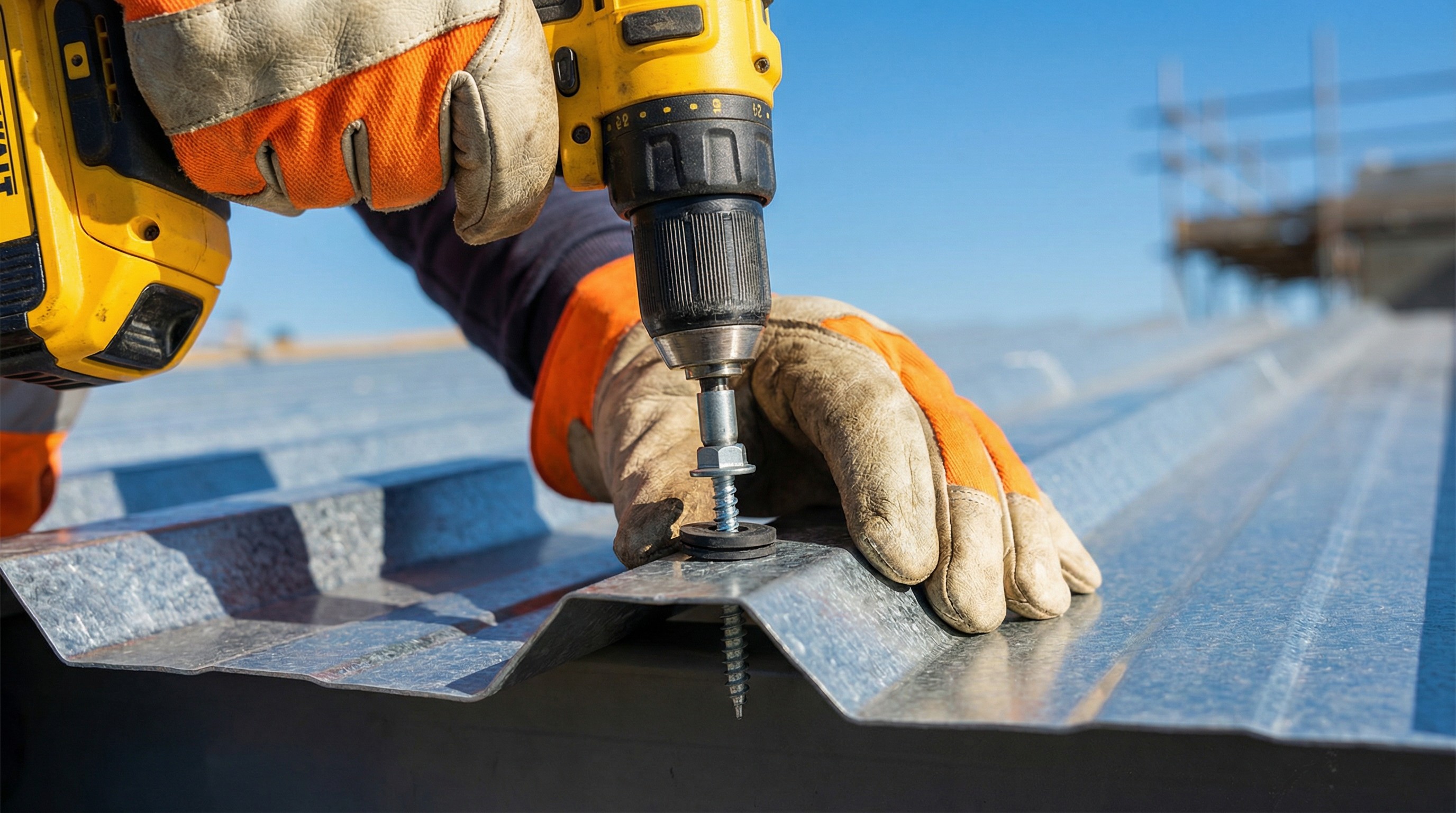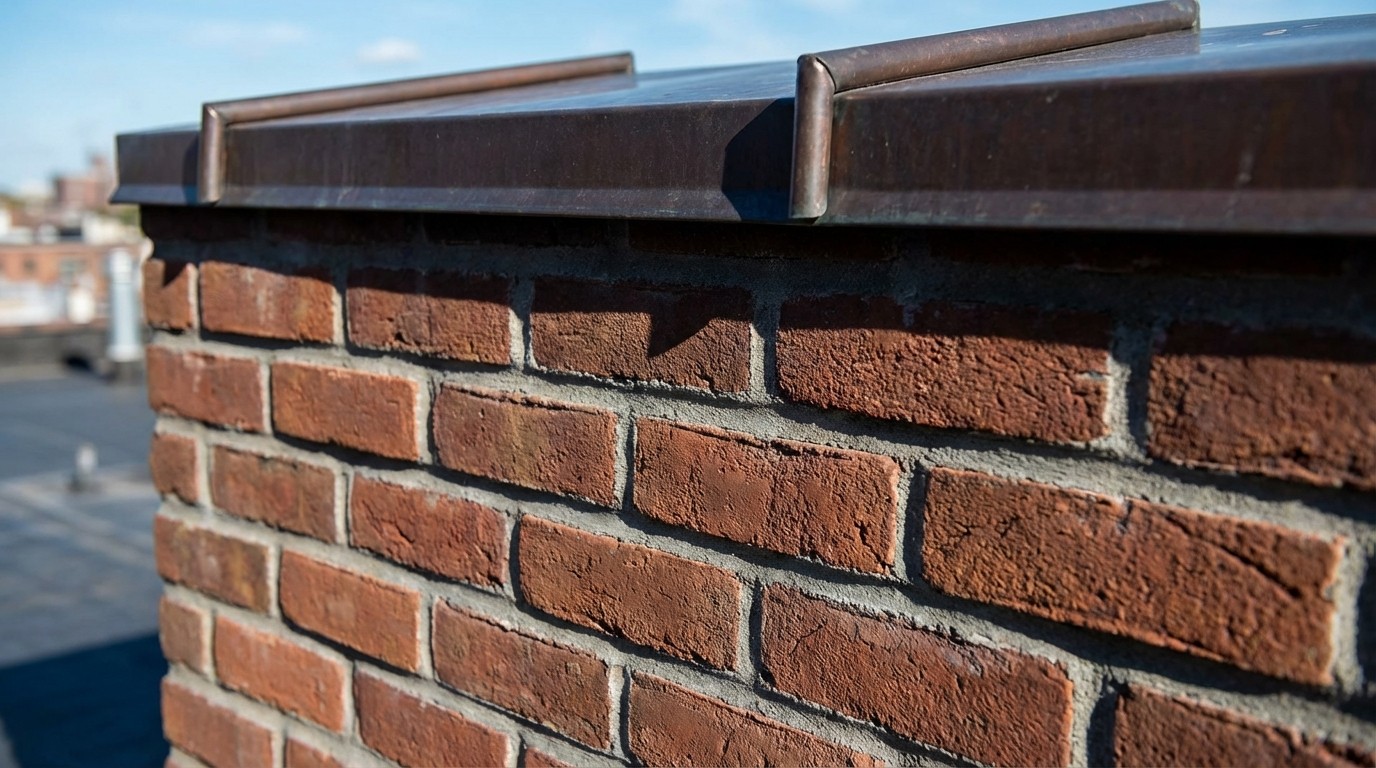You can install metal roofing yourself if you have basic construction skills, the right tools, and proper safety equipment.
Installing metal roofing yourself can be a rewarding project if you have the right t...
Tools Needed for Metal Roofing Installation
Metal roofing installation calls for a mix of hand tools, power tools, and safety gear. You probably own some of these already. Others are worth buying or renting before you climb up on the roof.
Hand Tools for Installing Metal Panels
You'll need these basic hand tools for cutting and measuring:
Tin snips: For cutting trim pieces and making small adjustments to panels
Tape measure: Accuracy matters here, so a 25-foot tape works well
Chalk line: Snaps straight reference lines across the roof deck
Roofing square: Keeps panels aligned properly from the start
Rubber mallet: Seats panels and trim without leaving dents
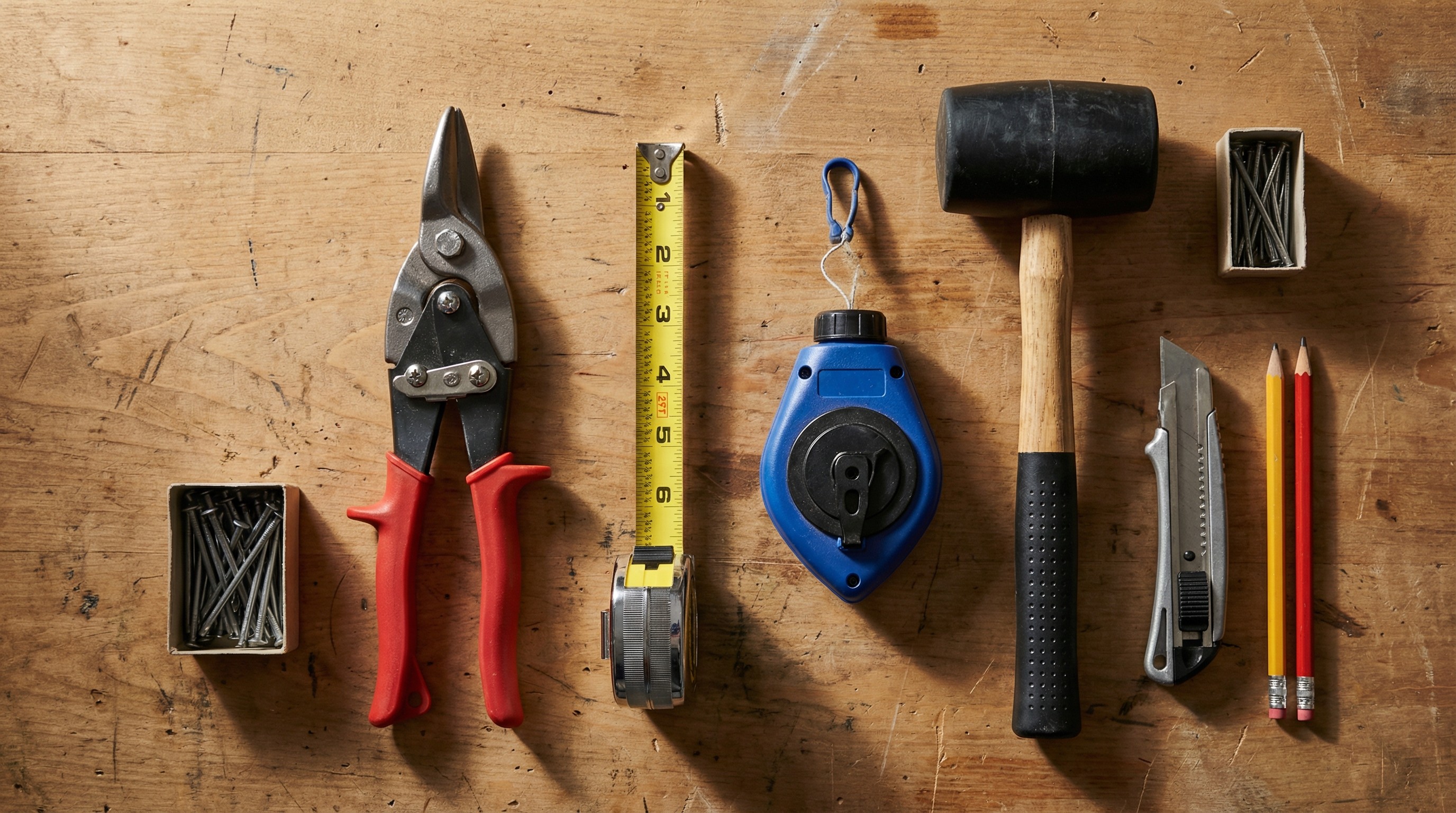
Power Tools for Metal Roof Installation
A cordless drill with a hex-head driver bit handles the bulk of the fastening work. For cutting panels, a nibbler or electric shears create clean edges without scattering metal shavings everywhere.
Avoid circular saws with abrasive blades. The heat damages the protective coating on...
Safety Equipment for Roof Work
Falls from roofs cause thousands of injuries each year, so proper safety gear is essential. A fal...
Safety glasses keep metal shavings out of your eyes. Heavy work gloves protect your hands from sharp panel edges.
Materials Required for Installing Metal Roofing
Beyond the panels, metal roofing requires several supporting materials. Having everything on hand before you start saves trips to the hardware store.
Metal Roofing Panels and Trim
Metal panels come in three main styles: corrugated ($3-5 per sq ft), ribbed ($4-6 per sq ft), and standing seam ($8-12 per sq ft). Each installs differently and offers different durability.
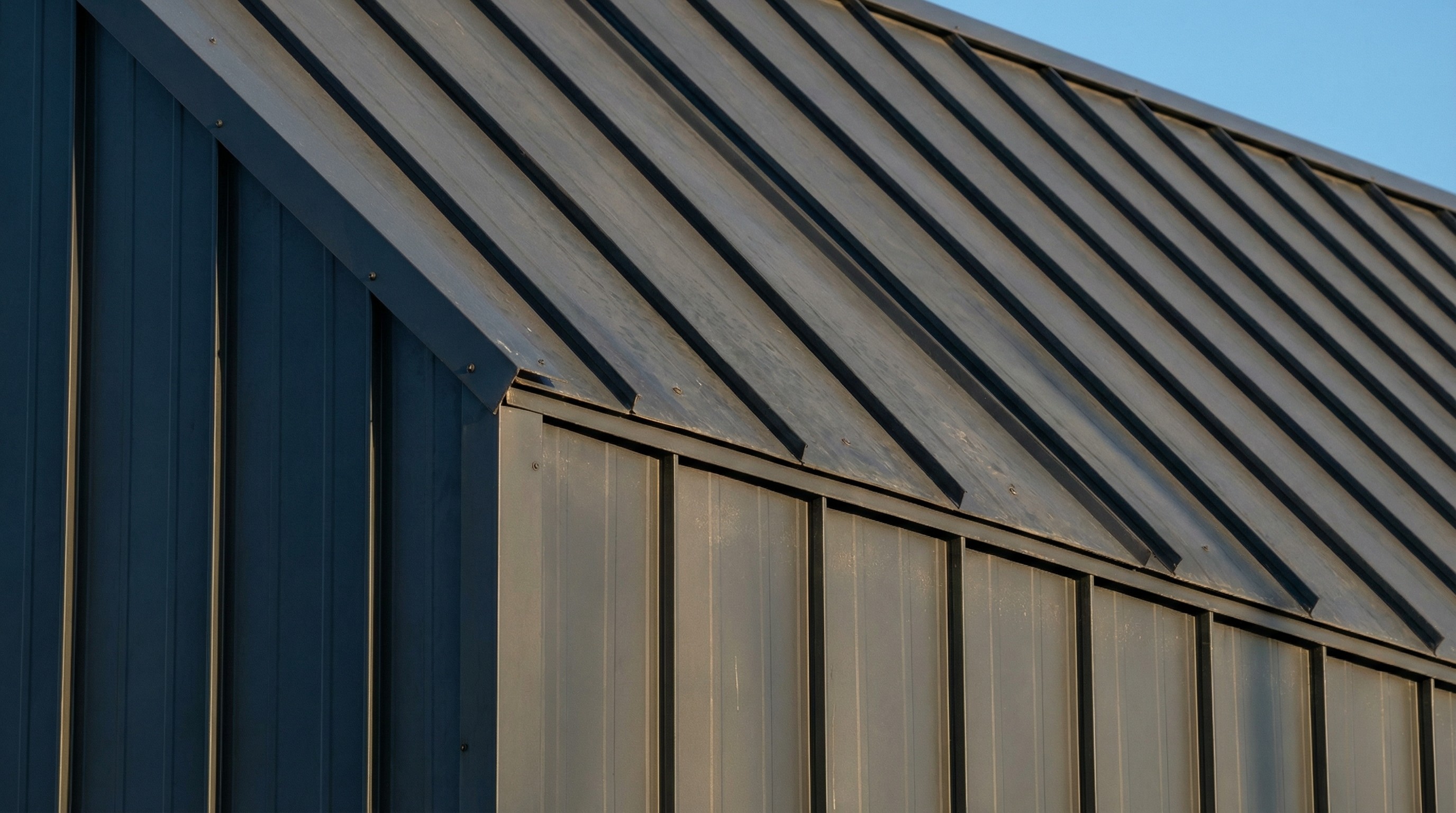
Drip edge: Directs water into gutters at the eave (the lower edge of the roof)
Rake trim: Covers panel edges along the sloped sides
Ridge cap: Seals the peak where two roof planes meet
Underlayment and Fasteners
Underlayment is the protective layer between your roof deck and the metal panels above. Synthetic underlayment is the go-to choice for most residential metal roofs because it's lightweight, resists tearing, and handles moisture well.
Metal roofing screws come with rubber washers that compress to create a watertight seal. Screw length matters too. Use 1.5-inch screws for panels over plywood decking, or 2-inch screws for thicker materials. Too short and they won't grip. Too long and they poke through the deck.
Flashing and Sealants
Flashing prevents leaks where panels meet other surfaces like vents, chimneys, and walls. You'll typically want valley flashing, pipe boots for plumbing vents, and step flashing where the roof meets vertical surfaces.
For sealants, silicone-based products work well because they stay flexible as the metal expands and contracts with temperature swings.
Step-by-Step Metal Roofing Installation
Here's the full process from start to finish. Each step builds on the one before it, so the sequence matters.
Step 1: Prepare and Inspect the Roof Deck
Start by checking the roof deck for problems. Look for rotted sheathing, nails sticking up, or uneven spots. Metal panels perform best on a solid, flat surface.
Sometimes you can install metal roofing over existing shingles. Whether that's allowed depends on local building codes and the condition of your current roof.
Step 2: Install Roofing Underlayment
Begin at the eave and roll out the underlayment horizontally. Overlap each row by about 4 inches and secure it with cap nails or staples. Work your way up toward the ridge, keeping the material smooth.
Wrinkles cause problems later, so take your time here.
Step 3: Attach Drip Edge and Eave Trim
Drip edge runs along the eave and directs water into your gutters instead of behind them. Install it under the underlayment at the eaves and over the underlayment at the rakes.
This sequence keeps water from wicking back under the roofing materials.
Step 4: Measure and Cut Metal Panels to Fit
Measure each roof section before cutting panels. Double-check your measurements before...
After cutting, touch up exposed edges with matching paint to prevent rust down the road.
Step 5: Align and Position the First Panel
The first panel sets the alignment for everything that follows, so this step deserves extra attention. Position it with the correct overhang at the eave, typically 1 to 1.5 inches. Use a square to confirm it's perpendicular to the eave.
Check alignment twice before driving any screws.
Step 6: Fasten Metal Roofing Panels With Screws
Most metal roofing screws are self-tapping, which means they drill their own holes. Pre-drilling usually isn't necessary. Drive screws into the flat areas of the panel for exposed fastener systems, or into the ribs for certain panel types.
The rubber washer tells you when you've got it right. It should compress to about half its original thickness but not bulge out around the screw head. Over-tightening cracks the washer and causes leaks. Under-tightening leaves gaps for water.
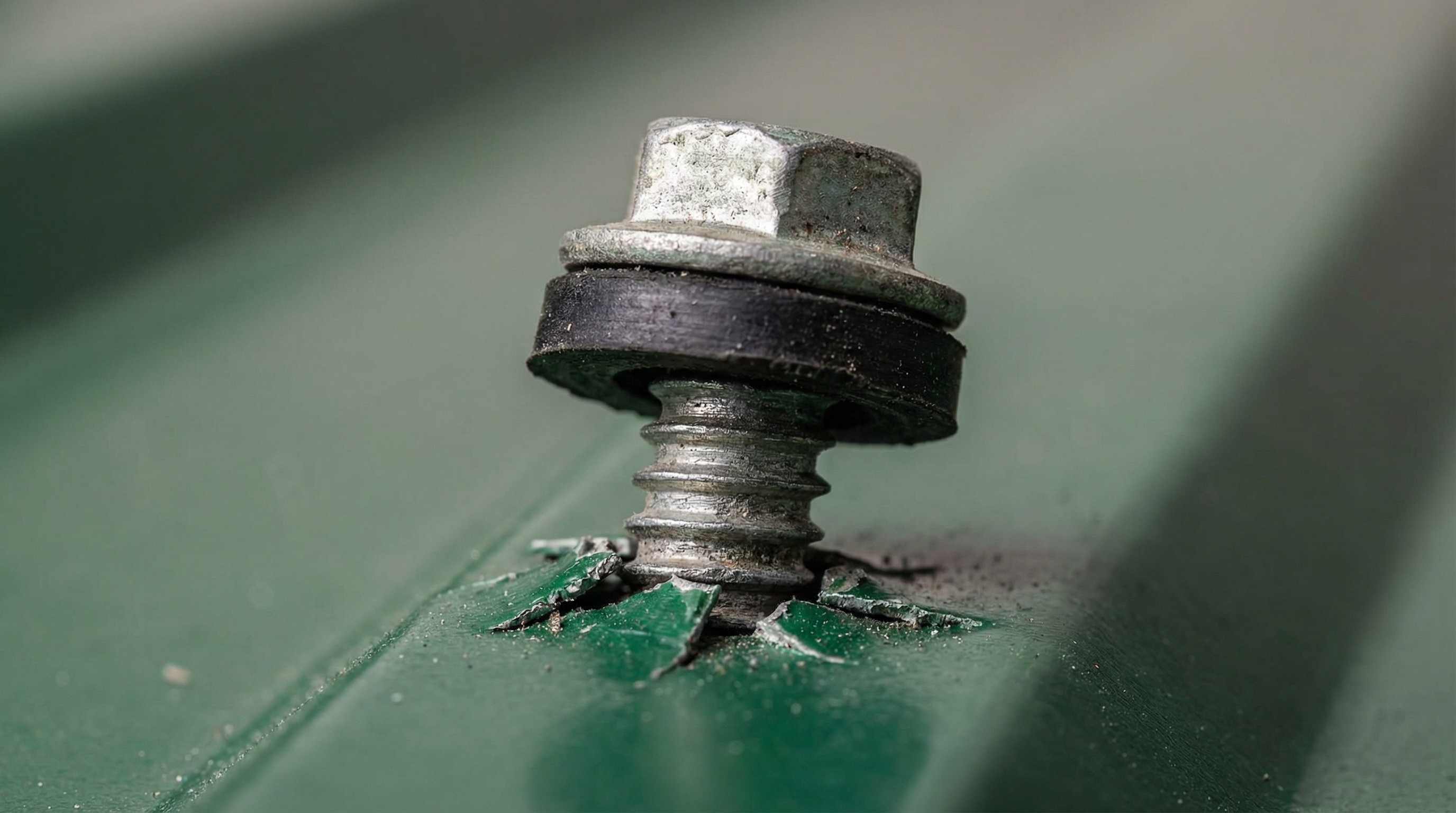
Step 7: Overlap Panels and Apply Sealant
Each panel overlaps the previous one by at least one rib. The direction of overlap matters. Panels overlap away from the prevailing wind direction so water doesn't get driven under the seam.
Apply sealant at overlaps and anywhere panels meet trim pieces.
Step 8: Install Flashing Around Vents and Chimneys
Flashing around roof penetrations is where most DIY leaks start. Pipe boots slip over plumbing vents and seal to the panel surface. Chimneys and walls call for step flashing, which weaves between courses of roofing material.
Seal all flashing edges with compatible sealant. This is one area where extra care pays off.
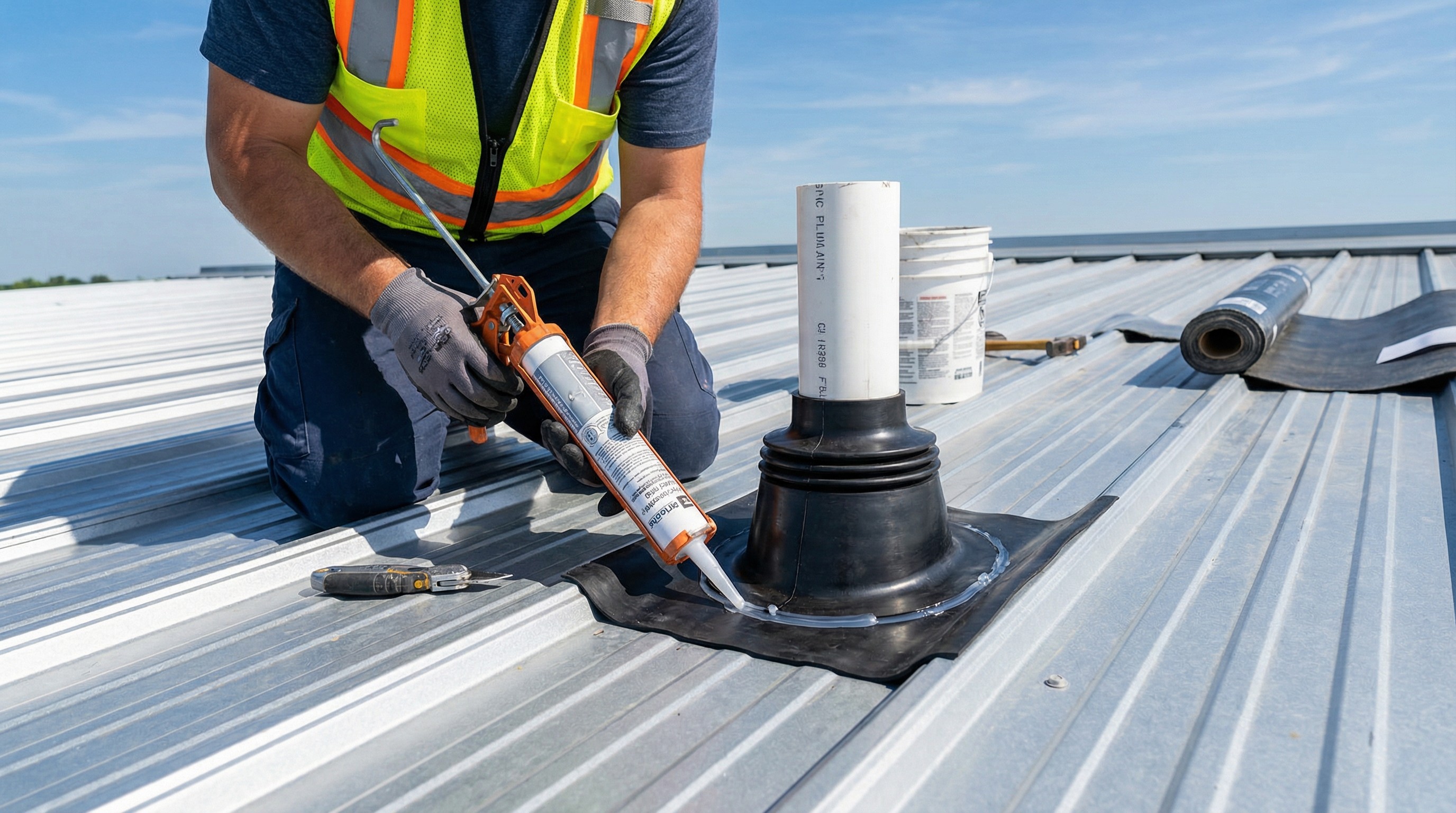
Step 9: Secure Closure Strips and Ridge Cap
Closure strips are foam or rubber pieces that fill the gaps between panels and trim at the ridge and eave. They block insects, debris, and wind-driven rain while still allowing ventilation.
Overlap sections away from the direction your area's strongest winds typically come from (usually west or northwest). Fasten through the cap into the closure strips and panels below.
What to Put Under Metal Roofing
The underlayment you choose affects how well your metal roof performs over time. Here are the main options:
Synthetic underlayment: The most common choice for residential metal roofs. Lightweight, tear-resistant, and handles moisture well.
Felt underlayment: A budget-friendly option that works but degrades faster than synthetic.
Self-adhering membrane: Best for low-slope roofs or areas prone to ice dams.
Avoid underlayments that trap moisture. Condensation under metal panels causes rust, rot, and mold that can cost thousands to repair.
Can You Install a Metal Roof Yourself
Whether you should tackle this yourself really depends on your roof's complexity and your experience level. Simple gable roofs on single-story structures are manageable for handy homeowners. Complex roofs with multiple valleys, dormers, or steep pitches are a different story.
Good DIY Candidate | Better to Hire a Pro |
|---|---|
Simple gable roof | Multiple valleys or dormers |
Single-story home | Two stories or higher |
Prior roofing experience | No construction background |
Shed or outbuilding | Primary residence |
If you're unsure, get 3-4 quotes from local roofers. This helps you weigh the cost of hiring out (typically $8-15 per square foot installed) against the time and risk of doing it yourself.
Common Metal Roofing Installation Mistakes to Avoid
Even experienced DIYers can encounter challenges with metal roofing. Understanding the most common issues helps you avoid them from the start.
Driving Screws Too Tight or Too Loose
The washer compresses flat against the panel without bulging when you've got it right. Practice on scrap material first to get the feel.
Incorrect Panel Overlap and Alignment
Misalignment compounds across the roof. A small error at the first panel becomes a big problem by the tenth. Check that panels are square every few courses.
Ignoring Thermal Expansion
Metal expands and contracts with temperature changes. Screw holes allow for slight movement, and panels shift a bit throughout the day. Driving screws too tightly restricts this movement and can cause buckling over time.
How Much Does It Cost to Install a Metal Roof
Several factors influence the total cost of a metal roof installation:
Roof size and complexity: More angles and penetrations mean more labor time
Panel type: Standing seam costs more than corrugated or ribbed panels
Material gauge: Thicker metal costs more but typically lasts longer
Tear-off: Removing the old roof adds to the total
Location: Labor rates vary by region
When to Hire a Professional for Metal Roof Installation
Some situations call for professional help regardless of your skill level.
Steep roof pitch: Anything above 6:12 requires specialized safety equipment
Complex geometry: Multiple valleys and dormers multiply potential leak points
Multi-story homes: Fall risks increase significantly with height
Warranty requirements: Some manufacturers require professional installation for coverage
Getting multiple quotes gives you valuable insight into fair pricing in your area, and the process is always free. Even if you're leaning toward DIY, understanding professional costs helps you make the best decision for your situation and budget.

